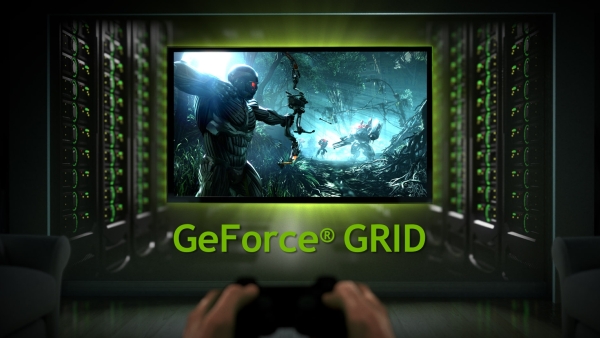Officially announced during the GPU Technology Conference held at San Jose, California, the cloud gaming platform known as the Geforce GRID certainly raised an eyebrow or two, and according to additional info it promises some great things when it comes to cloud gaming.
The cloud gaming concept has been growing steadily but the main problem is the actual latency. With Geforce GRID, Nvidia promises to cut latencies by half compared to current generation cloud gaming solution. The promised latency is even lower than the one on current game consoles.
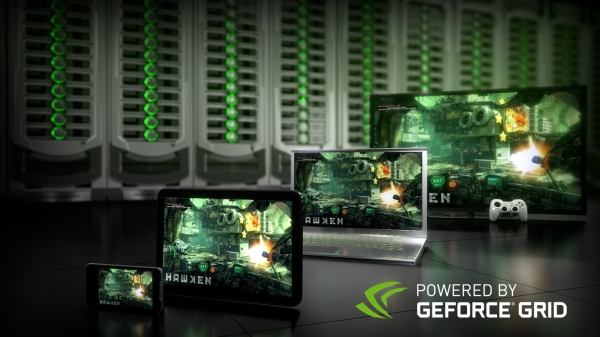
The low latency was achieved by reducing every aspect of the process, including render time and encoding and decoding times. All is done with a host of new hardware and software technologies, including NVidia's Geforce GRID low-latency encoder (NVENC), ultra-fast full-frame buffer capture (NVFBC) and ultra-fast frame read back (NVIFR).
According to Nvidia, consoles (having the most straightforward pipeline) currenly need about 100ms for the rendering portion and when you add 66ms for HDMI TV displays, it takes about 166ms. The current generation cloud solutions add up to 120ms to same process in order to render, encode, send over network and decode it on the client side. With render time reduced by half, and impressive reduced decode and encode times, you add up to a game latency that is even lower than the one on current consoles.
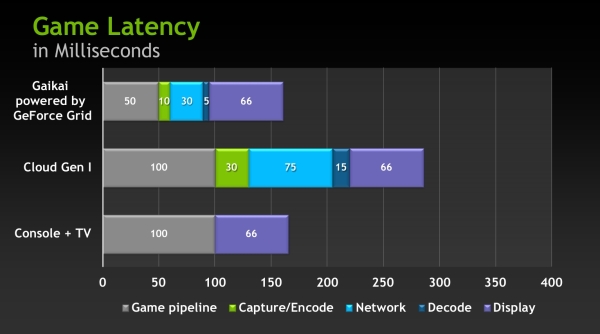
The hardware, Nvidia Geforce GRID processor, consists of two Kepler GPUs, each with its own encoder, a total of 3072 CUDA cores, 8GB of memory, 4.7 TFLOPS of shader performance and 250W TDP.
Another promised gain with Geforce GRID is in actual performance per watt and price of the Geforce GRID when compared to traditional and current cloud gaming solutions. Currently, you can have one GPU per server and thus one game stream per server while using up to 150W of power while Geforce GRID offers four GPUs per server, four game streams and use up to 75W per game stream.
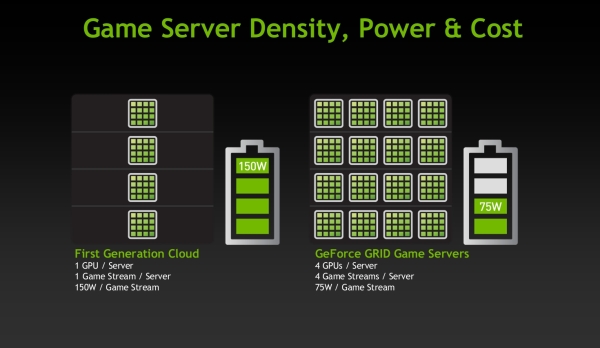
Currently, Nvidia managed to atract some impressive names from both developer side, including Capcom, Sega, Epic, Gearbox, THQ, CDProjekt, as well as some impressive names from current cloud gaming services including Gaikai, Ubitus, Otoy, Playcast and G-cluster.
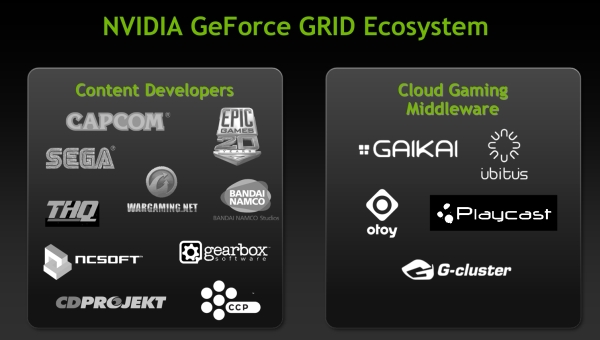
As noted earlier, Nvidia even did a nice demonstration with Geikai during its keynote at GTC where they showed a game running on LG's 3D Smart TV.
The Nvidia Geforce GRID is certainly an interesting developement and we will surely keep an eye out for further development.
